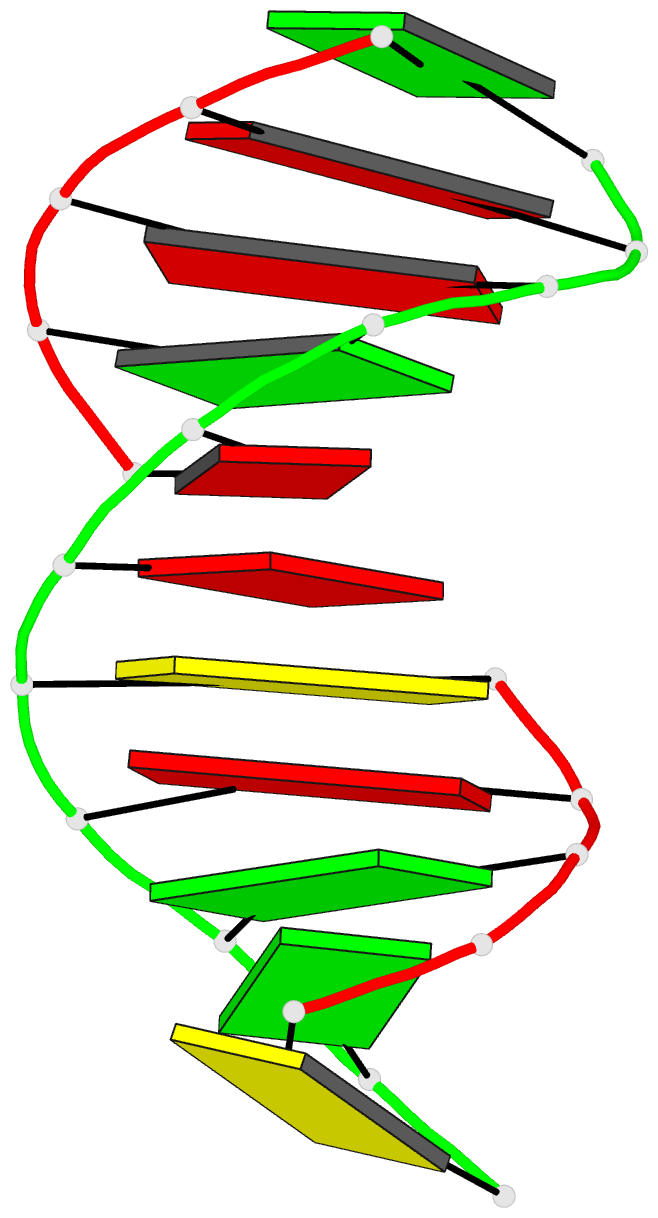Summary information and primary citation
- PDB-id
- 1k5f; DSSR-derived features in text and JSON formats
- Class
- DNA
- Method
- NMR
- Summary
- Solution structure of the s-styrene adduct in the ras61 sequence
- Reference
- Hennard C, Finneman J, Harris CM, Harris TM, Stone MP (2001): "The nonmutagenic (R)- and (S)-beta-(N(6)-adenyl)styrene oxide adducts are oriented in the major groove and show little perturbation to DNA
structure." Biochemistry, 40, 9780-9791. doi: 10.1021/bi010564v.
- Abstract
- Conformations of (R)-beta-(N(6)-adenyl)styrene oxide and (S)-beta-(N(6)-adenyl)styrene oxide adducts at position X(6) in d(CGGACXAGAAG).d(CTTCTTGTCCG), incorporating codons 60, 61 (underlined), and 62 of the human N-ras protooncogene, were refined from (1)H NMR data. These were designated as the beta-R(61,2) and beta-S(61,2) adducts. A total of 533 distance restraints and 162 dihedral restraints were used for the molecular dynamics calculations of the beta-S(61,2) adduct, while 518 distances and 163 dihedrals were used for the beta-R(61,2) adduct. The increased tether length of the beta-adducts results in two significant changes in adduct structure as compared to the corresponding alpha-styrenyl adducts [Stone, M. P., and Feng, B. (1996) Magn. Reson. Chem. 34, S105-S114]. First, it reduces the distortion introduced into the DNA duplex. For both the beta-R(61,2) and beta-S(61,2) adducts, the styrenyl moiety was positioned in the major groove of the duplex with little steric hindrance. Second, it mutes the influence of stereochemistry at the alpha-carbon such that both the beta-R(61,2) and beta-S(61,2) adducts exhibit similar conformations. The results were correlated with site-specific mutagenesis experiments that revealed the beta-R(61,2) and beta-S(61,2) adducts were not mutagenic and did not block polymerase bypass.





